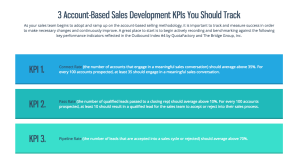Attribution can feel like a daunting task, but columnist James Collins breaks down his strategy for delivering a winning attribution model.

Marketers have always had a problem. They spend lots of money across lots of different marketing channels — PPC, display, affiliate, direct mail, email and so on — but it’s really hard for them to measure how well all of those channels perform together.
If marketers can’t see how well their advertising is working, then they can’t make the best decisions about how to spend their budget.
In addition, we know that marketers are challenged by data. They have lots of it, with reports from multiple systems, platforms and vendors. In many cases, there is overlap, with each vendor claiming the same sale.
Attribution helps to overcome these problems. With a consolidated, deduped view, brands can start to analyze the data and uncover valuable insights. By gaining clarity on how touch points — and combinations of touch points — drive conversions, businesses will be better able to manage budget allocation and campaign performance.
While attribution can provide clarity, marketers continue to struggle with implementing and maximizing the value of this solution. According to a recent study (registration required) from CMO Club and Rakuten, my employer, 34 percent of senior marketers surveyed evaluate each channel individually and optimize based on channel-specific performance, while a whopping 35 percent are not currently using a robust measurement technique.
My colleagues and I have developed a strategy around attribution that we believe makes the endeavor more digestible and manageable.
Digging into the data
Quite simply, we break it down like this:
- BUILD — Collect data across all channels and devices, linking disparate data sets to create the true user journey.
- MODEL — Apply an appropriate attribution algorithm to calculate the value of touch points and quantify the impact of each touch point on the sale.
- DO — Visualize performance and use the data to optimize individual channel performance and inform key budgeting decisions.
The insights that can be revealed when analyzing attributed marketing data are vast. For a marketer new to attribution, our advice is to start small. Go through the steps outlined above and seek out the quick wins that an attribution model can deliver, such as:
- understanding your user journey;
- analyzing how your marketing impacts performance; and
- driving decisions based on how channels contribute to conversion.
We recently worked with Smartwool, makers of high-quality socks, apparel and gear, to help them better understand their marketing ecosystem. Like many brands, Smartwool employs a variety of digital marketing techniques but did not have the ability to understand the interactions between all of their channels.
They knew that marketing touch points influenced each other, but they could not prove it or really understand the value of each interaction.
Through employing an attribution solution, we were able to bring more clarity into the journey of their customers. We found that 48 percent of Smartwool’s user journeys were actually multichannel, averaging about 3.4 touch points per journey. Also, these multichannel journeys drove a higher proportion of revenue (61 percent of total revenue).
Further analysis also revealed that Smartwool’s average order value (AOV) and conversion rate increased significantly as the number of touch points increased. For example, the AOV from journeys with five touch points was over 50 percent higher than that of the AOV from journeys with a single touch point.
These insights greatly support Smartwool’s multichannel efforts, provide evidence of the performance of their multichannel marketing and have helped them to better budget and forecast for future spend.
Digging deeper into Smartwool’s data revealed the performance of affiliate publishers at a more granular level. The data showed the influence one publisher had in driving users to the site at the start of the customer journey, who later converted via other channels.
Having this insight will enable Smartwool to better understand which publishers can be most influential at different stages of the purchase cycle.
For many marketers, attribution can feel like a daunting task. However, you can gain plenty of quick wins by digging into the data and getting a baseline understanding of how each channel influences the other.
As your business evolves, you can begin to apply custom attribution models, conduct a deeper analysis into lifetime value and use your data to solve even more business problems.
Some opinions expressed in this article may be those of a guest author and not necessarily Marketing Land. Staff authors are listed here.
Marketing Land – Internet Marketing News, Strategies & Tips
(34)
Report Post






